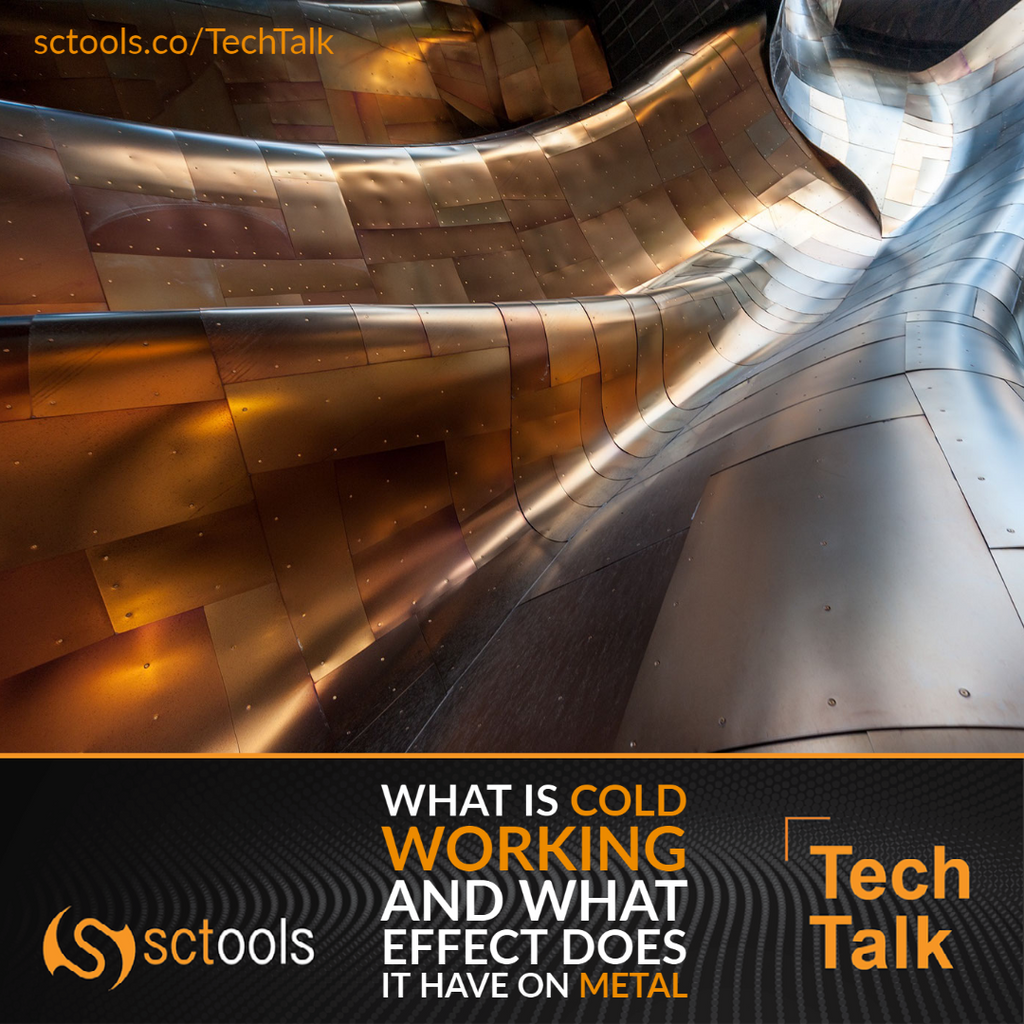.
TechTalk

What is Cold Working and What Effect Does it Have on Metal
Have you been wondering if one could manipulate metal without subjecting it to high temperatures?
Or, did someone mention metal cold working, and you're wondering how working on metal is achieved at room temperature?
Today we'll break down the process of cold working on metal; we'll also explain the four types of cold working and the effects they produce.
Let's dive right into it.
What is Cold Working on Metal

Cold working is strengthening metal and improving its physical properties by changing its shape and size without heating.
The metal undergoes mechanical stress at or near room temperature, which changes its crystalline structure, making it stronger.
Cold working also enables metal deformation. When these metals undergo mechanical or hydraulic pressure, a defect occurs within the metal, which reduces its crystal size and leaves room for manipulation.
Manufacturers use four cold-working techniques to manipulate metal workpieces.
Let's look at each in detail.
#1: Bending
Bending involves changing the geometry of metal by deforming it over a work axis. The metal's shape changes, but the volume remains the same. Here are examples of bending techniques.
|
Bending Technique |
How it Works |
|
Tube bending |
The process involves reshaping metal tubes and pipes into a new model through the press and rotary bending. |
|
Angle bending |
interchangeable dies with connection to a bed or ram twist the metal until it bends. |
|
Roll bending |
This process involves twisting rolled metal objects or large sheets to a new shape on roll formation. |
|
Seaming |
This process involves connecting two rims of sheet metal to their sides. |
The bending technique is perfect in manufacturing vehicles because car parts require custom-fit dimensions.
#2: Squeezing
Squeezing involves the metal passing through a pair of rollers or other machines that reduces its thickness or works at making the thickness uniform.
The table below illustrates examples of techniques applied under squeezing.
|
Squeezing Method |
How it Works |
|
Cold rolling |
Metal is stretched or twisted in between rollers. |
|
Cold forging |
Metal compressed in a die cavity to give it the desired form. |
|
Extrusion |
Pressing steel in a sealed cavity and applying hydraulic or mechanical pressure. |
|
Peening |
Metal surface deformation by hammering or blasting. |
Products squeezed using these methods, such as bars, strips, rods, and sheets, have a smoother surface and accurate dimensions.
#3: Shearing
Shearing involves cutting a piece of metal with a straight cutting blade. It also entails cutting lines on a metal workpiece by forcing two blades past each other. Here are three types of shearing techniques.
|
Shearing Technique |
How it Works |
|
Squaring |
Slicing or squaring metal using squaring shears. |
|
Piercing |
Shearing blades pierce and cut out a piece of metal, giving it a custom finish. |
|
Blanking |
Punching out a metal workpiece and using it as a separate piece. |
Shearing gives aluminum, iron, copper, steel, bronze, and stainless steel an excellent finish.
#4: Drawing
Drawing is the process of pulling metal through a die or small hole using compression force. This technique increases the metal's length while reducing its diameter. The table below explains two types of drawing techniques.
|
Drawing Technique |
How it Works |
|
Tube drawing |
Pulling a large diameter tube through a die and the tube comes out with a smaller diameter. |
|
Bar drawing |
A bar with a large diameter is placed in a die machine with a smaller diameter and compressed to the new measurements. |
The process of manufacturing steel bars and aluminum rods involves the drawing method.
____________

Effects of Cold Working on Metal
Manufacturers prefer cold working because it gives a solid final metal product to perform custom designs and manipulations.
It further produces the following effects on metal:
- Recrystallization temperature raises, which makes the metal strong
- The distorted grain structure increases the metal's resistance
- Metals residual stress remains unless subjected to high temperature
- The metal loses its ductility
- A metal workpiece acquires a superior surface finish
The next time you see a magnificent metal workpiece with curvatures and an outstanding design, you can largely credit it to cold-working.

If you have any questions about carbide cutting tools, be sure to reach out to us @ sctools.co/Home or call us at (877)737-0987. We help you machine better!


Comments (0)